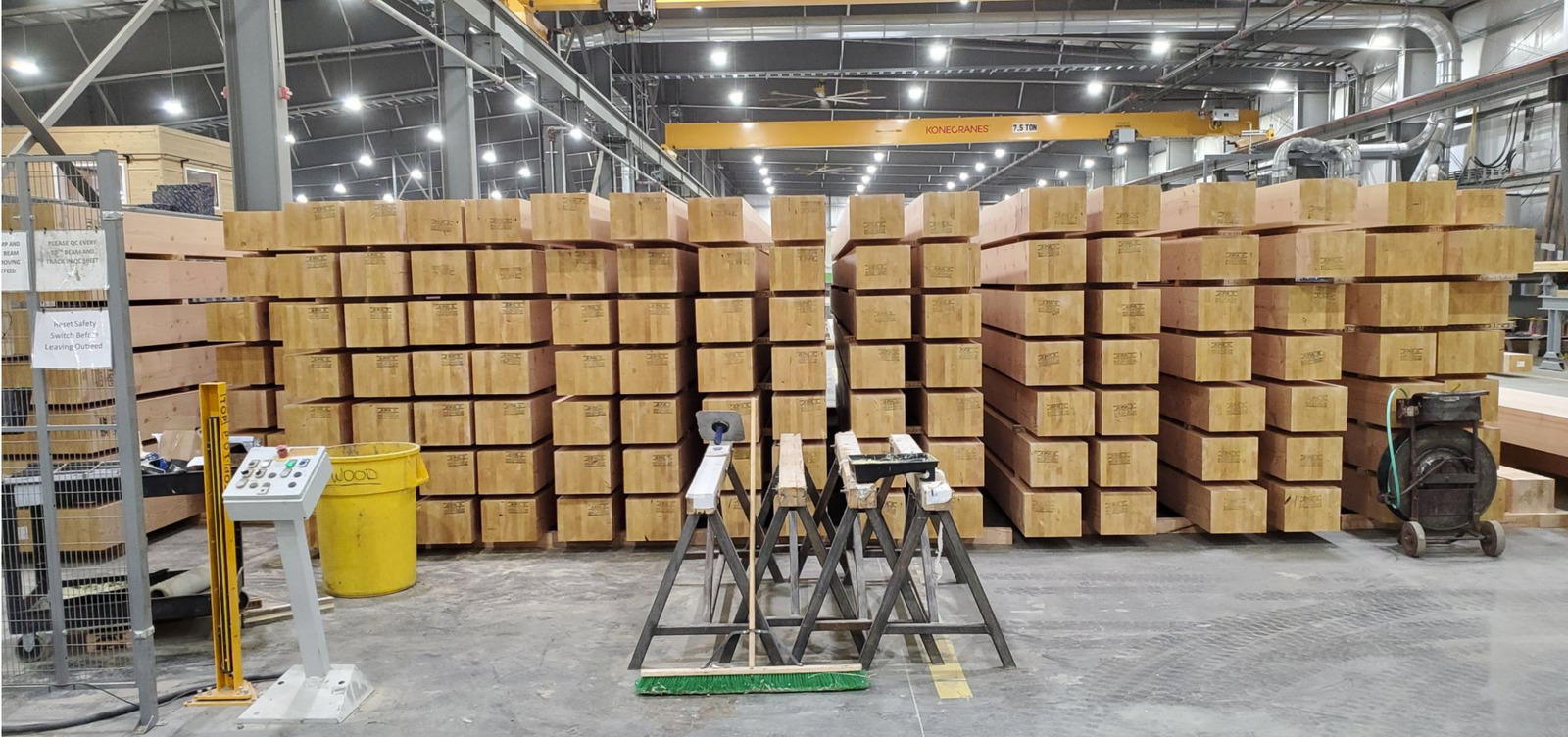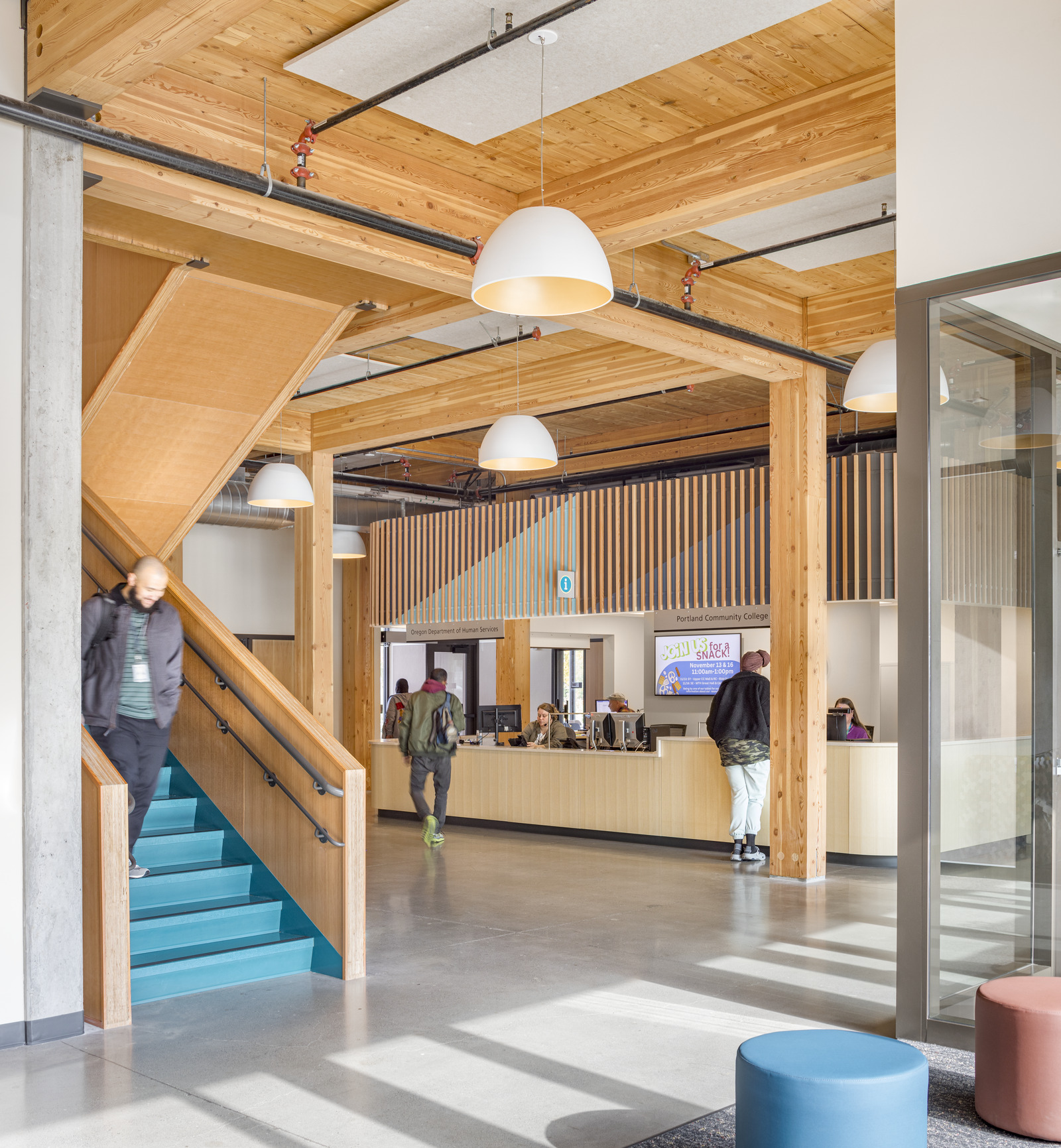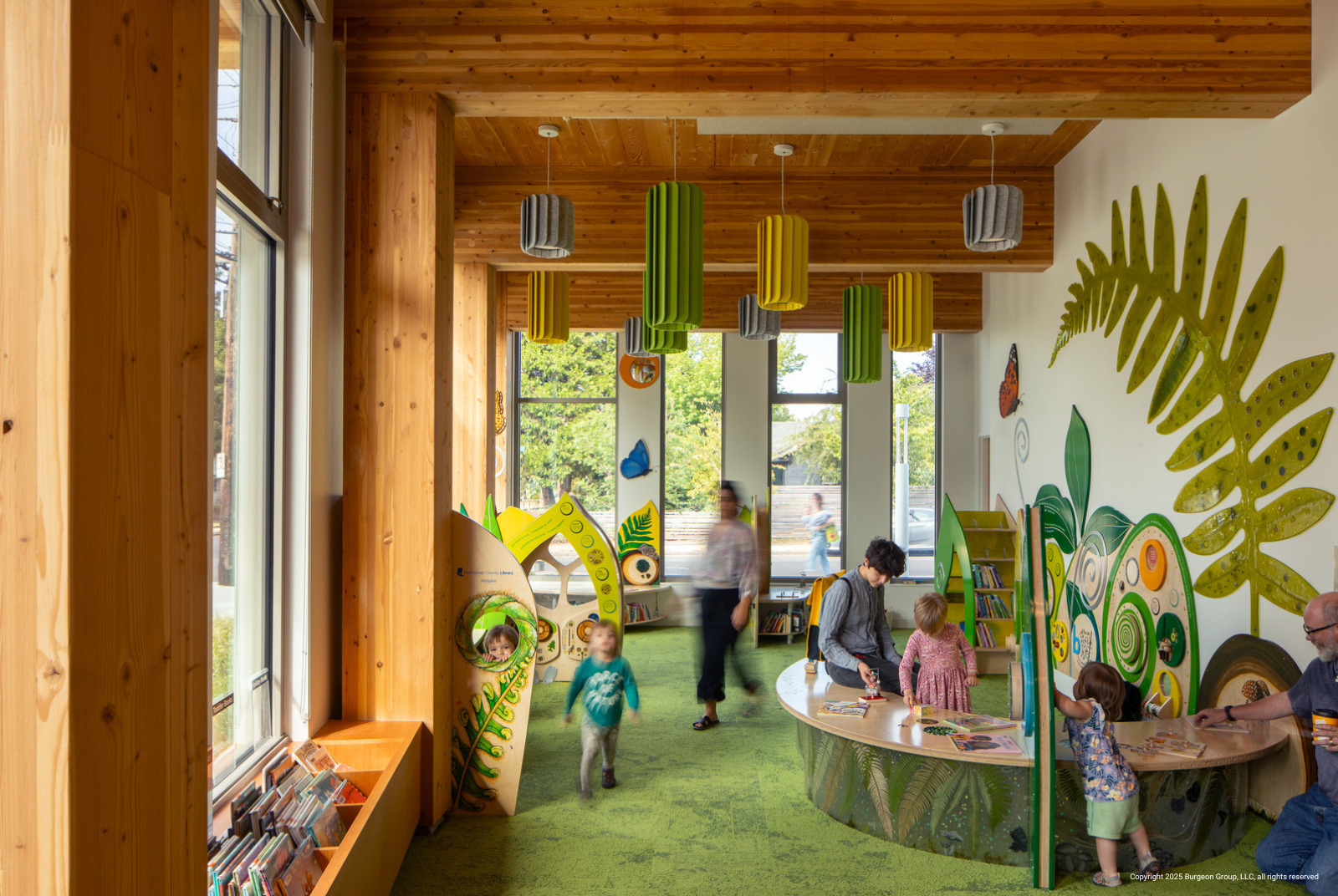Committed to Carbon Reduction
Meaningful climate action is one of Bora’s core design goals. We minimize operational carbon emissions through highly efficient, all-electric buildings that deliver reliable thermal comfort to users. We also reduce embodied carbon through strategies including adaptive reuse, optimized concrete mixtures, and wood construction. Our practice has been shaped by our roots in the Pacific Northwest, where we enjoy a thriving timber industry. We experience firsthand how mass timber construction fosters a unique respect between rural and urban, bringing forestry communities and civic clients together around a shared interest.

Studies have shown improved focus, comfort, and creativity when people are given a strong connection to nature. Mass timber’s color, warmth, grain, and beauty is a strong contributor to that connection. In short, mass timber makes better spaces for people. Mass timber projects allow us to connect the local economy, the global climate, and biophilia– people’s innate desire to connect to nature–within a singular design strategy.
The Right Kind of Mass Timber
Using a mass timber structure is only a sustainable design strategy if the lumber comes from sustainably managed forests. Prioritizing FSC certification whenever possible, we remain committed to the goals of Climate Smart Wood, a forest management approach that advances conservation and restoration of forest ecosystems, removes and stores more atmospheric carbon than conventional practices, and increases resilience in the face of climate change. We design for a mass timber structure on all our ground-up projects, aligning floor plates and column grid spacing with the natural qualities of wood. While not every building may end up being mass timber, we believe that every project with the potential to be wood should embrace its possibilities.
Mass Timber 101: A Podcast
In our six-episode podcast series, Bora Associate Principal Scott Barton-Smith and Studio Manager Sara Rae break down the basics of mass timber—exploring its definition, common types, and groundbreaking potential. They also dive into mass timber’s fire-resistant properties, cost considerations, and more.
Available on Spotify and Apple Podcasts

Above: The 50,000 sf PCC Metro Center is structured in FSC-certified glulam beams and CLT panels.
Left: The new mass timber Holgate Library sequesters carbon while providing warm, welcoming spaces.
